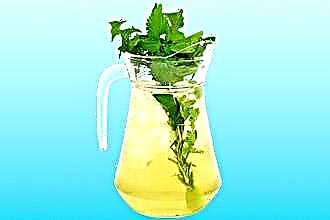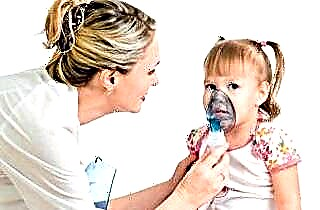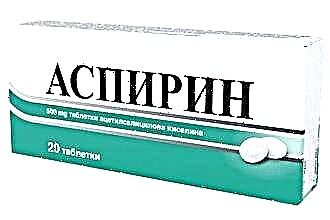Among the great variety of natural remedies, beekeeping products such as wax, bee bread, propolis and honey occupy a special place. They have been known since antiquity for their anti-inflammatory, analgesic and antimicrobial properties. In the XX century, after a number of clinical studies, the treatment of sinusitis with propolis became especially widespread.
Useful properties of propolis
 All beekeeping products are actually unique natural medicines.
All beekeeping products are actually unique natural medicines.
Propolis is also called bee glue or black wax, it is a product of the vital activity of bees, they are used to strengthen and build honeycombs.
It consists of resins of various plants (50%), wax (30%), essential oils, tannins, pollen and balms.
The main healing properties of bee glue are:
- Anesthesia.
- Bactericidal and antiviral action, fights almost all types of infections.
- Removal of toxins from the body.
- Regeneration of mucous membranes.
- Reducing inflammation.
- Strengthening the vascular walls.
- Increasing the immunity of the whole organism.
- Strengthening the effect of antibiotic therapy.
- Improving local blood circulation.
Otolaryngologist P.V. Kovalik suggested using propolis tincture for sinusitis in medical practice in the 70s of the last century. He tested a 20% solution of alcoholic propolis in combination with an equal proportion of sterile peach oil. The emulsion was injected into the sinuses during punctures and showed a very good result; subsequently, the methods of this therapy were improved.
Propolis for sinusitis is good because it can be used for a long time, microorganisms do not develop resistance to its components, unlike synthetic antibiotics. Treatment of sinusitis with propolis practically has no side effects; it should be used with caution only by those people who generally do not individually tolerate all beekeeping products. It is advisable to discuss such details with an otolaryngologist beforehand.
What propolis tinctures are used
 Bee glue-based products can be purchased at the pharmacy, they are inexpensive. If a person has his own apiary, or he does not trust purchased drugs, then the necessary medicine is easy to prepare at home. Existing propolis tinctures:
Bee glue-based products can be purchased at the pharmacy, they are inexpensive. If a person has his own apiary, or he does not trust purchased drugs, then the necessary medicine is easy to prepare at home. Existing propolis tinctures:
- Alcoholic 10%. The most common of all. It's easy to make at home. Crushed glue and ethyl alcohol (96%) are mixed in a glass container in a ratio of 1:10, and then insisted in a cool dark place for a week. You can use the strained infusion as a lotion: cotton swabs are moistened with liquid and placed in the nostrils. Also in this concentration, the agent is used to wash the maxillary cavities during puncture.
- Alcohol 20%. Most often, such a tincture is sold in pharmacies. It is mainly used for nasal instillation in combination with vegetable oil and sea buckthorn oil.
- Water solution. Prepared by insisting crushed glue in boiling water (3:10). Suitable for the treatment of sinusitis in people with intolerance to alcohol-based drugs.
Folk recipes based on propolis
To date, propolis tincture for sinusitis is used in a number of recipes for ointments, drops, inhalations, rinses and lotions. You can simply chew a piece of bee glue or take it internally as a liquid. Depending on the method of application, the healing effect can be local or general.
The most famous and proven recipes for treating maxillary sinusitis with bee glue:
- Inhalation. A 10% tincture of the substance is injected into a saucepan with hot water (about 80 degrees) or into a special inhaler at the rate of 1 teaspoon per half liter of liquid. The vapor is inhaled through the nose, which must be cleaned before starting the procedure. For the best effect, you can cover your head with a towel or sheet. Inhalation is carried out up to 3 times a day for 10 minutes until the condition improves. This method is best used when the first symptoms of sinusitis appear: blood vessels dilate, blood circulation improves, and the body's protective function is stimulated.
 Washing. 20 drops of the drug are stirred in a glass of warm water, one pinch of baking soda is added there. To prevent propolis from collecting on the surface, the solution must be stirred regularly. Using a syringe without a needle or syringe, the nasopharynx is rinsed three times a day for up to 10 days, half a glass of the drug is enough for one session. You should not swallow the liquid, if after the procedure you bend over the sink, then it will flow out of the cavities on its own. After the end of the rinsing, it is useful to inject a small piece of butter (unsalted) into the nasal passages and lie down for a while.
Washing. 20 drops of the drug are stirred in a glass of warm water, one pinch of baking soda is added there. To prevent propolis from collecting on the surface, the solution must be stirred regularly. Using a syringe without a needle or syringe, the nasopharynx is rinsed three times a day for up to 10 days, half a glass of the drug is enough for one session. You should not swallow the liquid, if after the procedure you bend over the sink, then it will flow out of the cavities on its own. After the end of the rinsing, it is useful to inject a small piece of butter (unsalted) into the nasal passages and lie down for a while.- Nose applications. Two cotton swabs or matches with wound cotton wool are dipped in 20% bee glue infusion, then in vegetable oil, after which they are inserted into the nose for half an hour four times a day. Promote the discharge of purulent exudate and improve nasal breathing. They work best in combination with the subsequent instillation of a mixture of eucalyptus oil and honey into the nostrils.
- Ingestion. A mixture of honey and propolis is made in this way: 200 g of fresh natural honey is placed in a water bath and 10 g of glue is dissolved in it. In the cooled form, take a teaspoon twice a day. The use of this drug improves the general resistance of the body to disease and increases the patient's vitality.
- Ointment. Purchased from a pharmacy or made at home. Required ingredients: crushed propolis and honey (10 g each), petroleum jelly (15 g), lanolin (30 g) and anesthesin powder (3 g). All ingredients are mixed in a water bath, then the ointment is stored in the refrigerator.
Turundas with ointment are injected into the nasal passages for 1.5-2 hours, after which they rinse with any antiseptic solution (for example, eucalyptus or chamomile).
There are also several well-known black wax nasal drops that complement antibiticotherapy well:
- The propolis oil is prepared in this way. A pea-sized piece of glue is dissolved in vegetable oil heated in a water bath (half a glass). The cooled drug is instilled with a pipette, 2 drops 2 times a day. This folk remedy has worked well for chronic sinusitis.
- Another recipe for oil drops. 20 g of crushed black wax is infused in 100 ml of regular vodka for a week in a dark, cool place.
 After that, 3 tablespoons of sea buckthorn oil is poured into the solution filtered through a sieve. It is dripped twice a day, 3 drops.
After that, 3 tablespoons of sea buckthorn oil is poured into the solution filtered through a sieve. It is dripped twice a day, 3 drops. - Drops in aqueous solution. Pour 30 g of finely grated bee glue into a thermos, pour a glass of boiling water and, tightly closed, leave overnight. The mixture filtered through a sieve is poured into each nostril 4 drops four times a day.
- Freshly squeezed juice of blue onion and potatoes is mixed with bee glue in equal parts. The mixture is poured into the nose 3 times a day, 2 drops. Stored in the refrigerator.
Infusion of propolis with puncture
If the treatment of sinusitis was not started on time, and the disease has passed into an advanced purulent stage, then most likely, you cannot do without a puncture. However, even in this case, you can use a beekeeping product. Basically, doctors use two recipes:
- Infusion of alcoholic black wax 20% and sterile peach oil are reduced in equal proportions and heated to the temperature of the human body.After puncturing the sinus and flushing out the accumulated pus, the doctor pours 3 ml of the mixture into the sinus with a syringe. After 2-3 days, the procedure is repeated. It is important that there is no need to use strong synthetic antibiotics and antiseptics. In addition, this method is suitable for people who are sensitive to local anesthetic drugs, such as lidocaine or novocaine, since the glue has a certain anesthetic property.
- An alcoholic 10% tincture of the drug is mixed with a 10% aqueous-alcoholic emulsion and injected into the sinus during puncture. It has a strong disinfecting and anti-inflammatory effect, accelerates the healing process.
It is also recommended to put turundas soaked in an emulsion of bee glue into the nasal passages after the puncture. Such manipulations are done only on the recommendation of the attending physician.
With maxillary sinusitis, complex therapy is usually prescribed. The most effective treatment is with the use of both medications and products based on natural ingredients.

 Washing. 20 drops of the drug are stirred in a glass of warm water, one pinch of baking soda is added there. To prevent propolis from collecting on the surface, the solution must be stirred regularly. Using a syringe without a needle or syringe, the nasopharynx is rinsed three times a day for up to 10 days, half a glass of the drug is enough for one session. You should not swallow the liquid, if after the procedure you bend over the sink, then it will flow out of the cavities on its own. After the end of the rinsing, it is useful to inject a small piece of butter (unsalted) into the nasal passages and lie down for a while.
Washing. 20 drops of the drug are stirred in a glass of warm water, one pinch of baking soda is added there. To prevent propolis from collecting on the surface, the solution must be stirred regularly. Using a syringe without a needle or syringe, the nasopharynx is rinsed three times a day for up to 10 days, half a glass of the drug is enough for one session. You should not swallow the liquid, if after the procedure you bend over the sink, then it will flow out of the cavities on its own. After the end of the rinsing, it is useful to inject a small piece of butter (unsalted) into the nasal passages and lie down for a while. After that, 3 tablespoons of sea buckthorn oil is poured into the solution filtered through a sieve. It is dripped twice a day, 3 drops.
After that, 3 tablespoons of sea buckthorn oil is poured into the solution filtered through a sieve. It is dripped twice a day, 3 drops.

